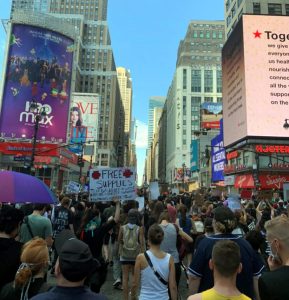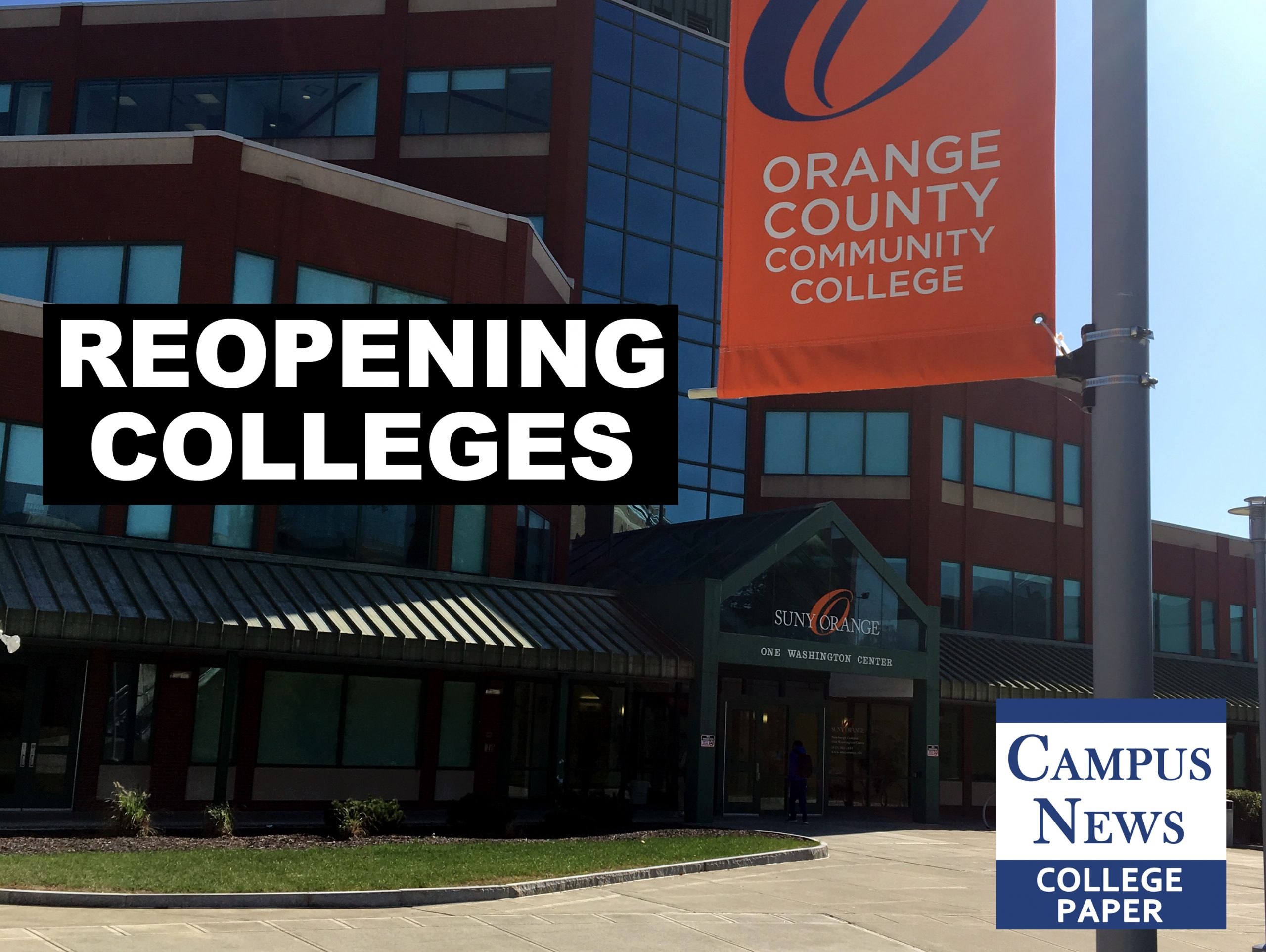By Darren Johnson
Campus News
In the last issue of Campus News, I wrote a long piece on what to expect campuses to look like this fall, considering the COVID-19 crisis and the possibility for a second wave of the virus.
In this piece, I will offer analysis, based upon all the research I did for that piece. Plus, realize, I spent 20 years working in college communications, so know how to read between the lines of the various press releases I get from colleges. Too, as publisher of this paper, I am in regular contact with administrators at scores of colleges, and can often speak with them “off the record” to get the real scoop, and not the spin.
Let’s delve into the various scenarios, as specific to our region in the Northeast – a hotbed for the virus, where government has been cautious and measured.
SUNY Four-Year Colleges
The State University of New York has 64 campuses overall, about half of which are traditional four-year colleges. You know, with dorms, huge cafeterias, sports teams and the occasional wild party.
The state’s main union that deals with the four-year schools, United University Professions, recently issued its blueprint for campuses to open live this fall. It includes a lot of COVID-19 testing of students, faculty and staff on campuses. But the fact that the UUP seems amenable to a real opening of campuses – acknowledging that distance education isn’t ideal – is a positive sign.
What may complicate things, however, is that SUNY’s chancellor, Kristina Johnson, announced her abrupt departure in June. Johnson had just served under three years, and had barely gotten her feet wet in that time. As well, she didn’t really DO anything in her short tenure, nor offer much in the way of new ideas. So there has been a void in leadership since the departure of former Chancellor Nancy Zimpher, who was rather dynamic and politically adept.
Therefore, my feeling is, the current lack of firm leadership may prove a hiccup. The University of California system already announced it was going virtual-only for fall. SUNY is similar in size and scope. There’s a chance that the hurdles of social distancing classrooms, cafeterias and events while also testing each and every community member what? – weekly, monthly? – will prove too much to map out by the start of classes. SUNY four-year colleges mostly have more than enough applicants. Even if they lose some who don’t like distance education, they still will get enough tuition revenue to stay afloat.
SUNY Community Colleges
I’m getting the vibe that community colleges Upstate and on Long Island will be mostly open for business this fall. In New York State, community colleges are co-managed by the state and county boards. While the governor can – as he did this past spring – declare a state of emergency and close all campuses, it looks like he is allowing regions in the state to “reopen” and make their own destinies.

Community college administrators are telling me that they had OK online-only enrollment this summer, but their enrollment numbers are lagging for fall. These campuses very much rely on having enrollment – and thus people paying tuition – to pay the bills. They can’t take the risk and declare they will be online-only for the fall.
There’s also the dynamic of Upstate and Long Island community college boards of trustees, which tend to be made up of local business people, who favor opening things up.
The other reality is, K-12 schools are expected to be “live.” How can a local community college, in good conscience, remain closed with “an abundance of caution” when other local schools are open?
However, I did receive a press release from a Massachusetts community college not far from the border of New York State that has committed to online-only for the fall. There may be exceptions.
All of CUNY
Where New York is different than California is that it not only has the statewide system of colleges, in our case, SUNY, but also the City University of New York. And New York City has about half of the state’s population, so CUNY is equally formidable.
Unlike the SUNY system, the CUNY system operates as a whole, and they are reporting that summer online-only enrollment was up 17% (see separate story). Considering the usual added bureaucratic hurdles with New York City government, and that the City still is considered a COVID hotspot, my instinct is that CUNY may decide to stay online for the beginning of the fall, at least.
Going to college in New York City is different, anyway. The “college experience” is simply being in the city, not necessarily “on campus.” So, considering summer online-only enrollment went well, CUNY may be hoping that virtual momentum continues into fall.
Private Colleges
Private colleges outside New York City will certainly be open. I’ve already started getting press releases announcing this. These schools are very dependent on tuition dollars and many students have been waiting to enroll until they were sure they’d get the whole residential experience.
In New York City, some of the more prestigious colleges – who can afford to be conservative because they have huge endowments and enrollment wait lists that can be mined – are hinting they may be online-only or online-mostly. It makes sense because New York City is more clustered, so it’s harder to socially distance people. As well, the richer schools have more to lose, should COVID-related class action lawsuits hit after an outbreak.
But MOST private colleges – yeah, they’ll be open.
The College Experience
It doesn’t look like fall sports will be happening in their traditional way. Still, colleges give scholarships to players and have coaches on the payroll. If you’re an athlete, stay in shape. You probably will be doing something this fall. But packed stadiums and arenas? If the pro sports leagues haven’t figured that out yet, how will colleges figure that out by September?
Buffet-style cafeterias and double-occupancy rooms may be a thing of the past, and colleges will need to keep some rooms aside to quarantine sick students. Perhaps this crisis allows colleges to finally modernize their residential facilities.
Theater productions will likely favor black boxes and experimental – the kind of fare where audiences don’t pack the house. Don’t expect a “Guys and Dolls” musical extravaganza.
Student publications will continue to wither. This past spring semester saw newspapers and literary magazines go online-only, and student fees – which help fund these publications – were rebated back to students. This crisis is helping speed up the extinction of student-managed print publications.
The Need to Meet in Person
 The mass protests related to the George Floyd killing that have hit cities across the country add two more points to this argument. First, keeping students at home does not mean you are keeping them away from people who may have a virus. Protesters were up close and personal and many were not wearing masks. How is this different than being at a college event? Besides, research says people are more likely to get COVID-19 at home.
The mass protests related to the George Floyd killing that have hit cities across the country add two more points to this argument. First, keeping students at home does not mean you are keeping them away from people who may have a virus. Protesters were up close and personal and many were not wearing masks. How is this different than being at a college event? Besides, research says people are more likely to get COVID-19 at home.
Add to this, we saw this past spring semester that there were huge inequities with sending students home. Some went home to mansions with beautiful computers and high-speed wi-fi; others went home to unemployment and poverty. SUNY and CUNY had to give out tens of thousands of laptops to students who did not have them, exemplifying the need. At least on campus, there’s a more even playing field.
Second, students and their professors may want to talk about and organize around these recent demonstrations. Gathering via Zoom just isn’t the same. Live meetups have more power, and the recent demonstrations on the streets of so many cities prove that. The virtual world has its limitations.
So, overall, it looks like most college campuses will be traditionally open this fall. As they need to be.





Facebook Comments